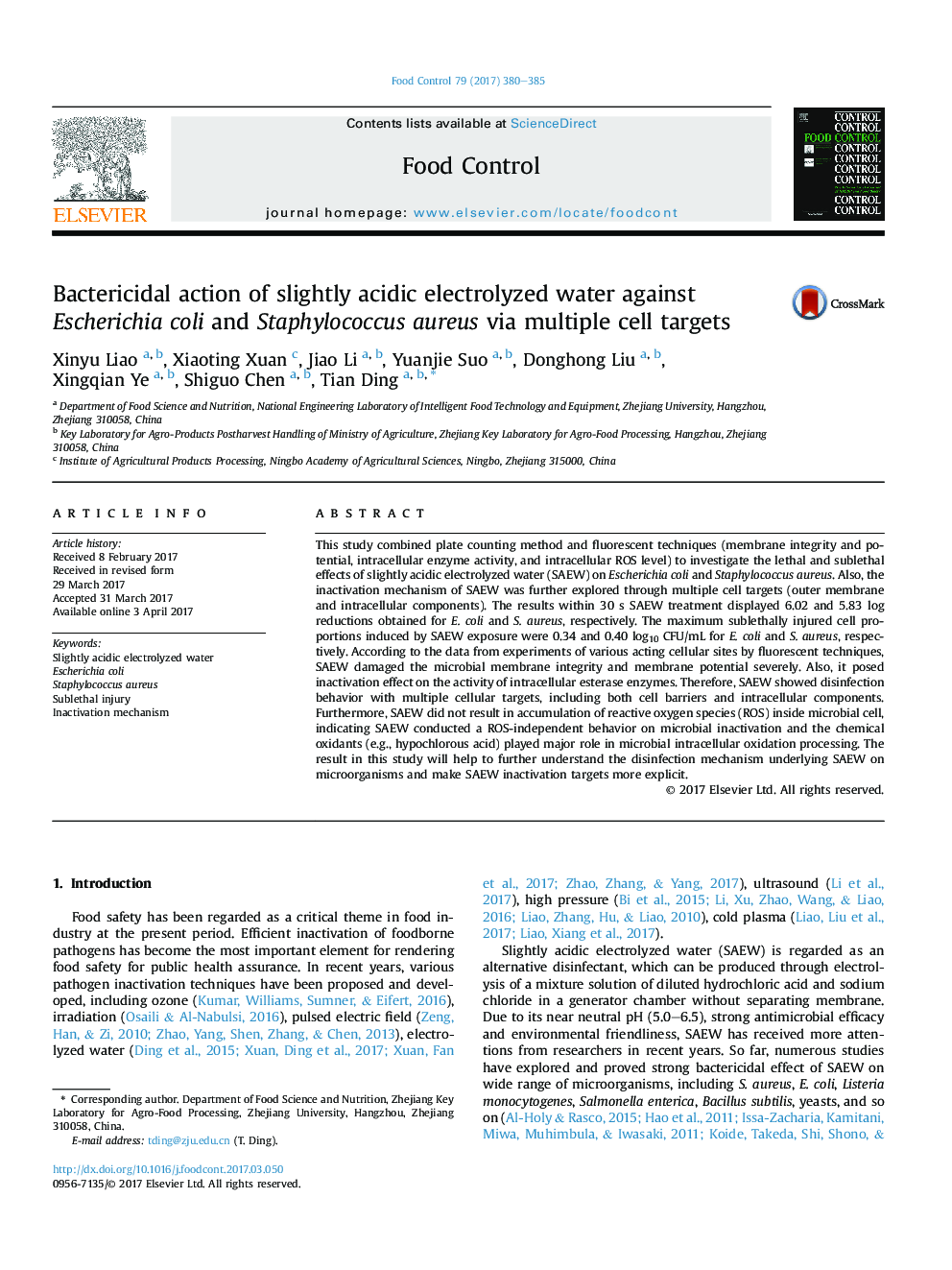| کد مقاله | کد نشریه | سال انتشار | مقاله انگلیسی | نسخه تمام متن |
|---|---|---|---|---|
| 5767474 | 1628385 | 2017 | 6 صفحه PDF | دانلود رایگان |
- SAEW induced lethal and sublethal injury of both E. coli and S. aureus.
- Both cell membranes and intracellular components were inactivated targets for SAEW.
- SAEW would not result in intracellular ROS accumulation.
This study combined plate counting method and fluorescent techniques (membrane integrity and potential, intracellular enzyme activity, and intracellular ROS level) to investigate the lethal and sublethal effects of slightly acidic electrolyzed water (SAEW) on Escherichia coli and Staphylococcus aureus. Also, the inactivation mechanism of SAEW was further explored through multiple cell targets (outer membrane and intracellular components). The results within 30 s SAEW treatment displayed 6.02 and 5.83 log reductions obtained for E. coli and S. aureus, respectively. The maximum sublethally injured cell proportions induced by SAEW exposure were 0.34 and 0.40 log10 CFU/mL for E. coli and S. aureus, respectively. According to the data from experiments of various acting cellular sites by fluorescent techniques, SAEW damaged the microbial membrane integrity and membrane potential severely. Also, it posed inactivation effect on the activity of intracellular esterase enzymes. Therefore, SAEW showed disinfection behavior with multiple cellular targets, including both cell barriers and intracellular components. Furthermore, SAEW did not result in accumulation of reactive oxygen species (ROS) inside microbial cell, indicating SAEW conducted a ROS-independent behavior on microbial inactivation and the chemical oxidants (e.g., hypochlorous acid) played major role in microbial intracellular oxidation processing. The result in this study will help to further understand the disinfection mechanism underlying SAEW on microorganisms and make SAEW inactivation targets more explicit.
Journal: Food Control - Volume 79, September 2017, Pages 380-385
